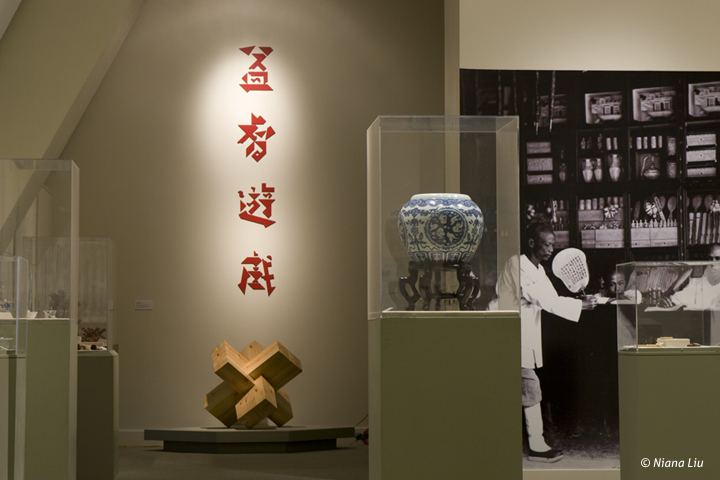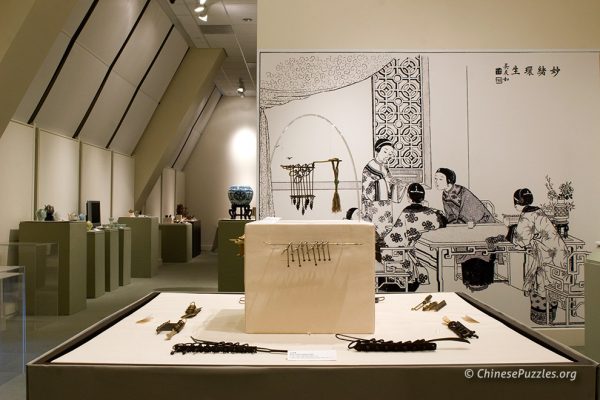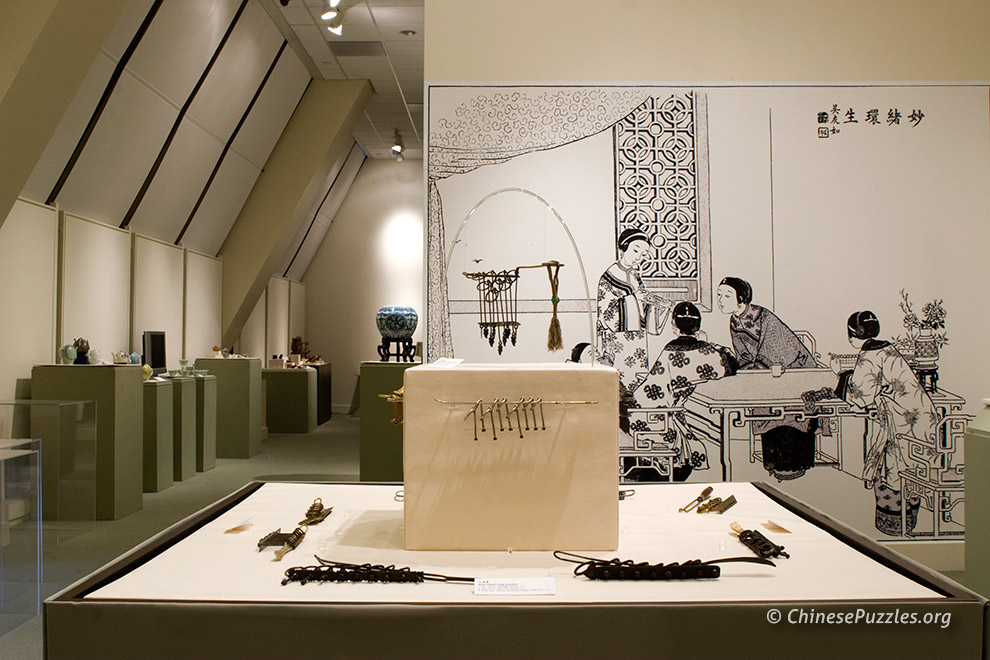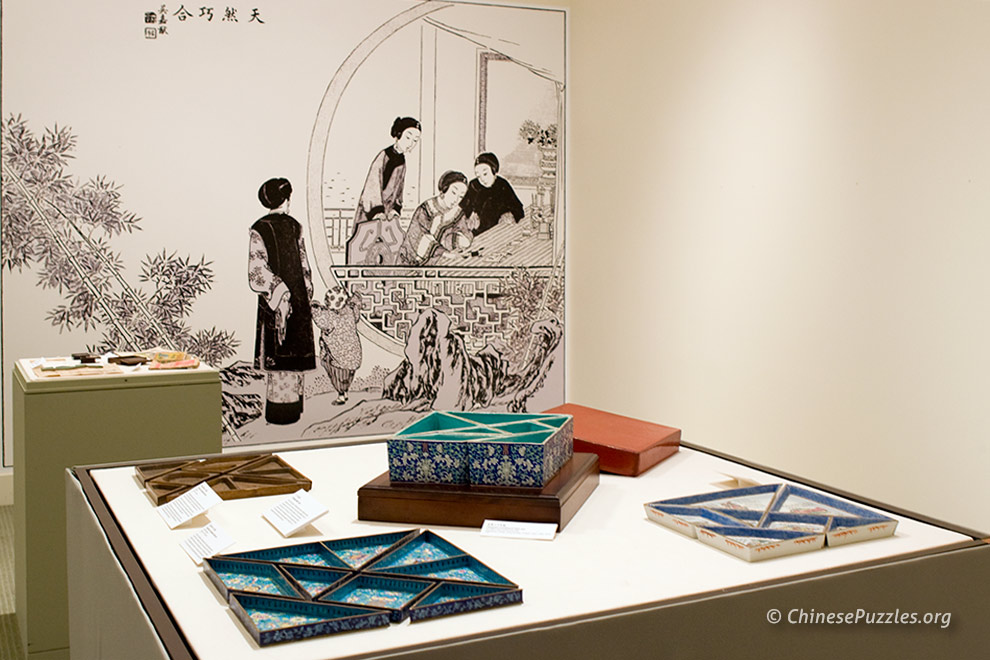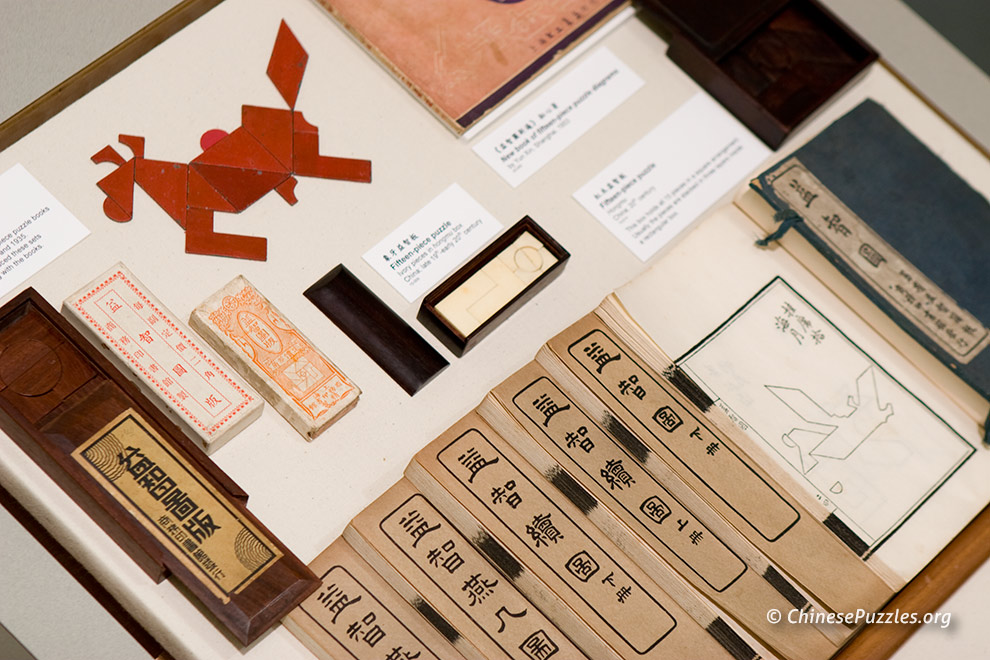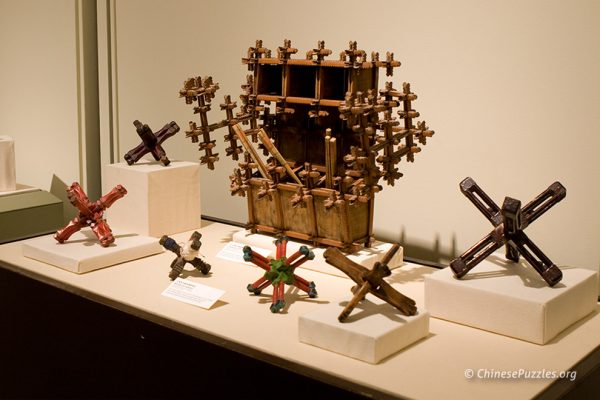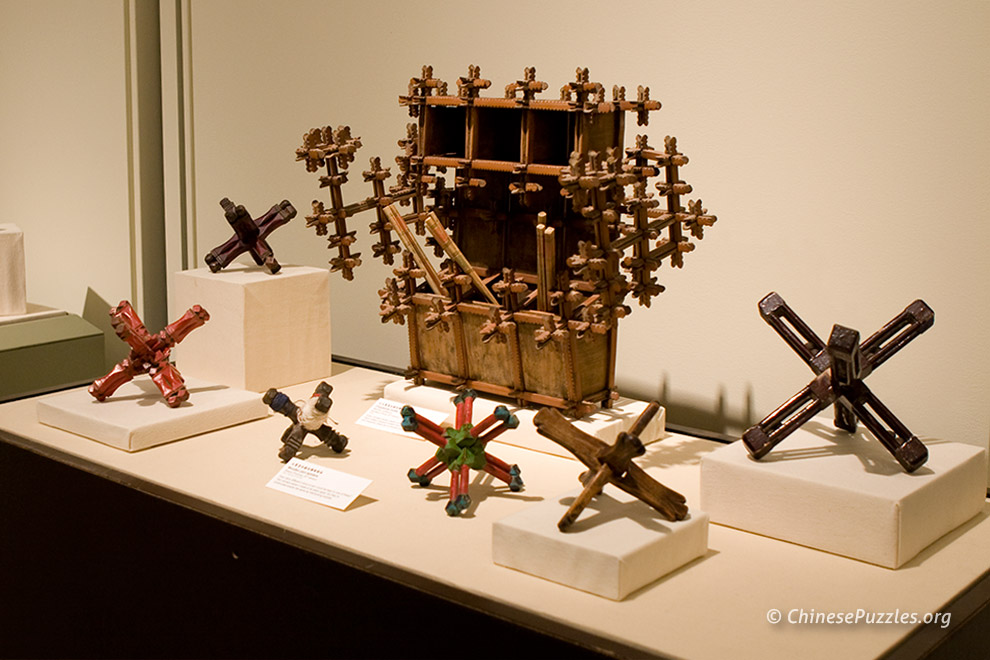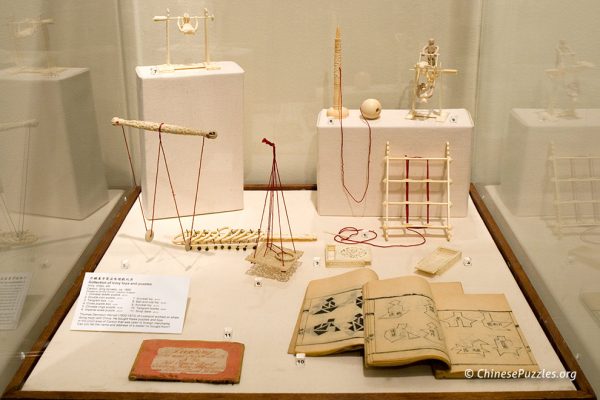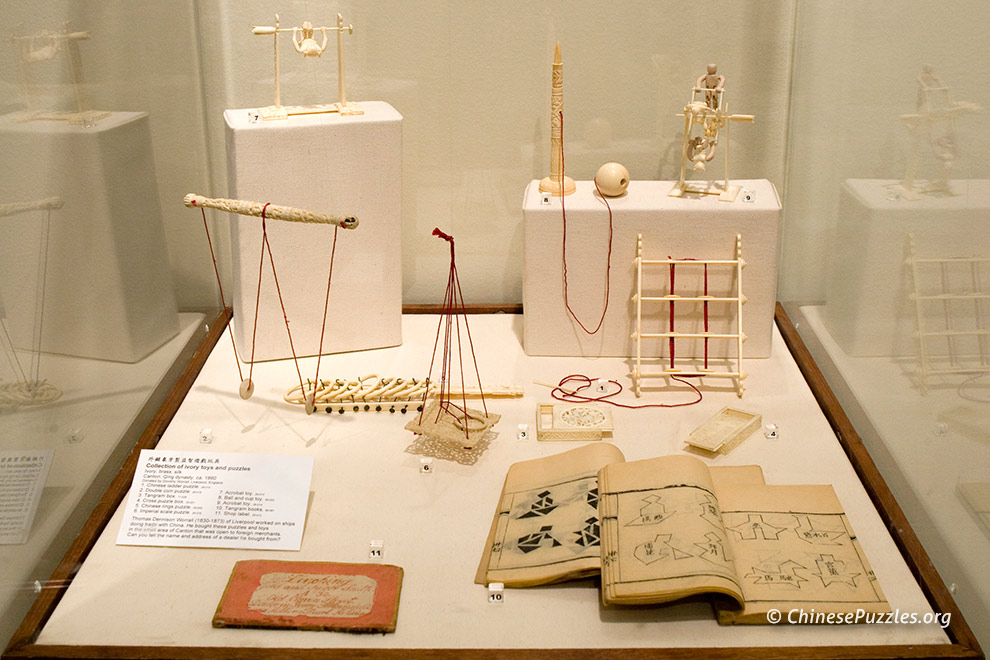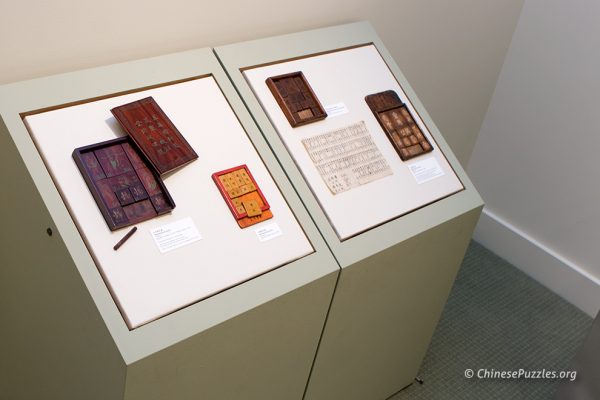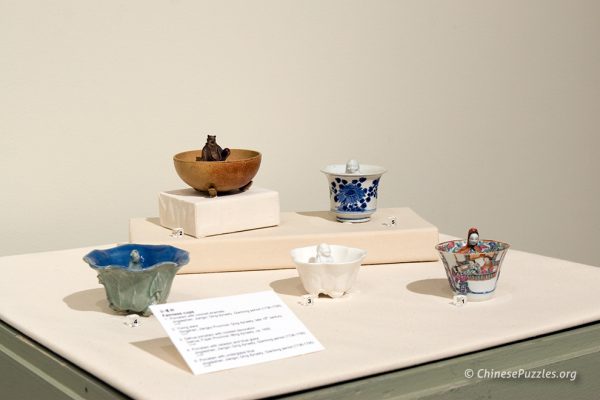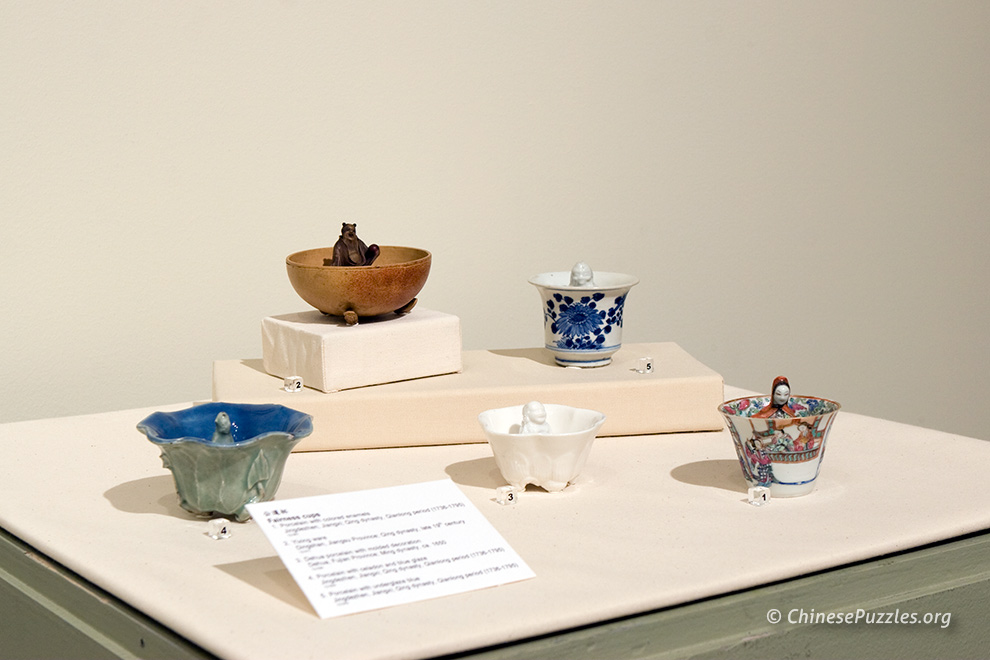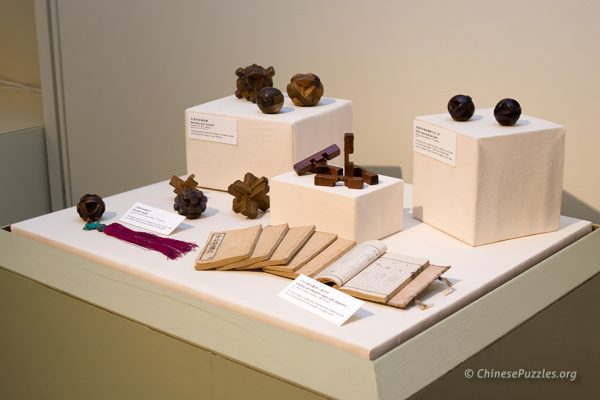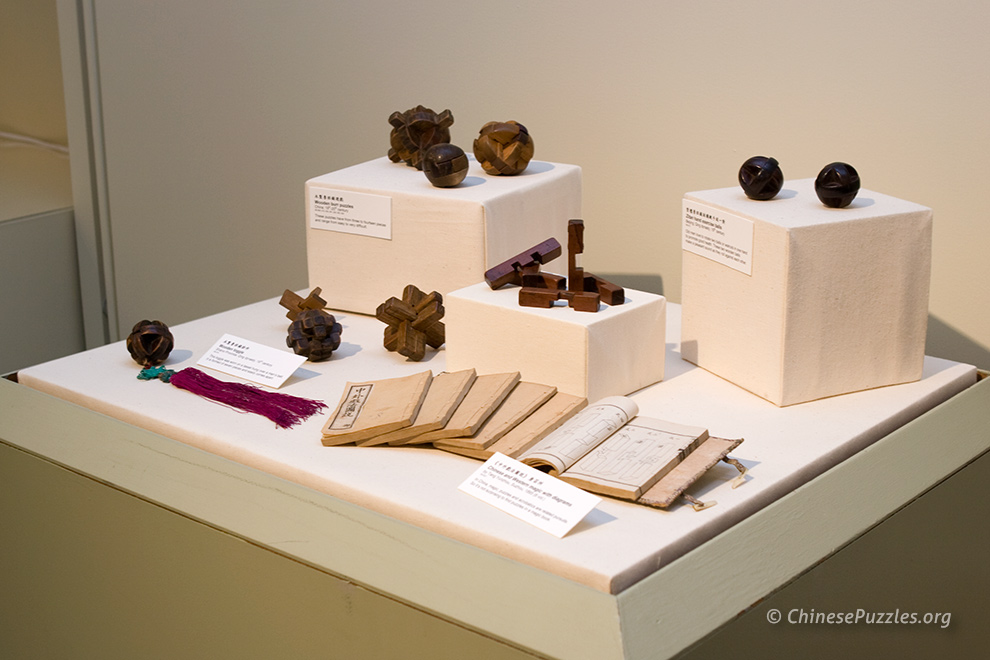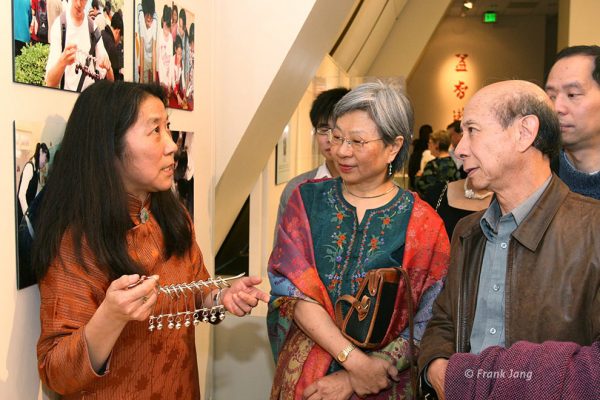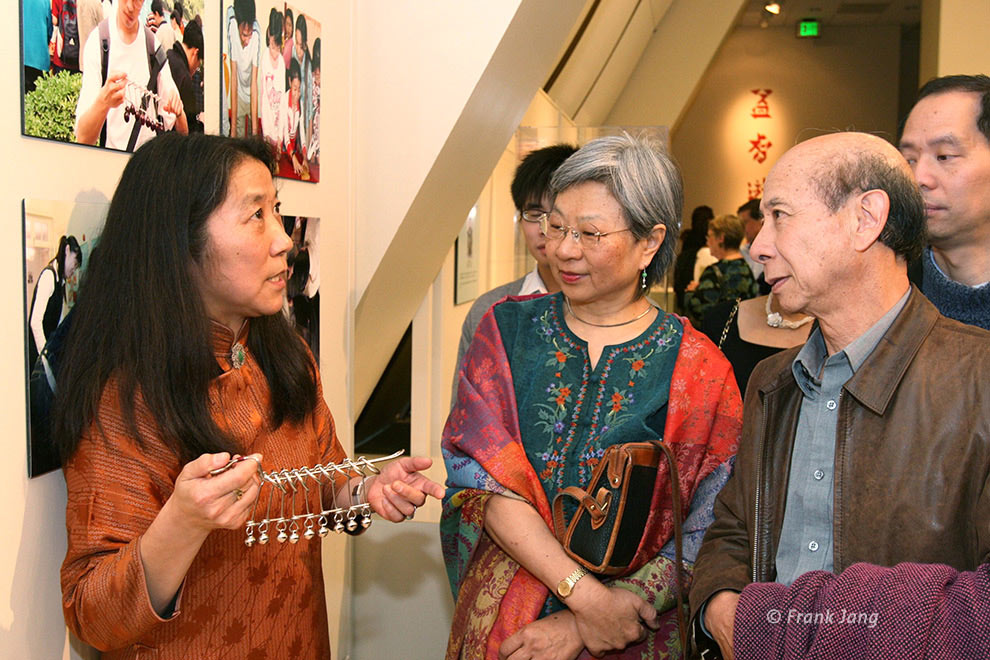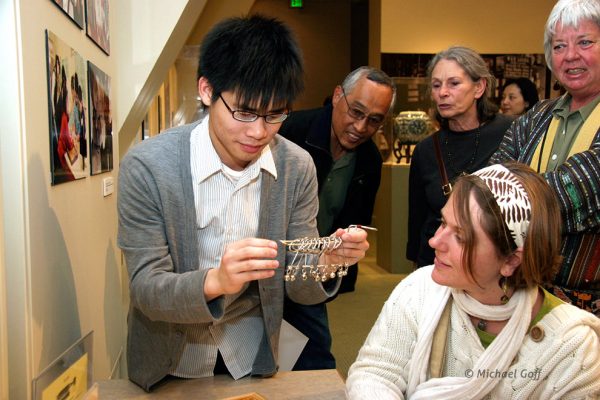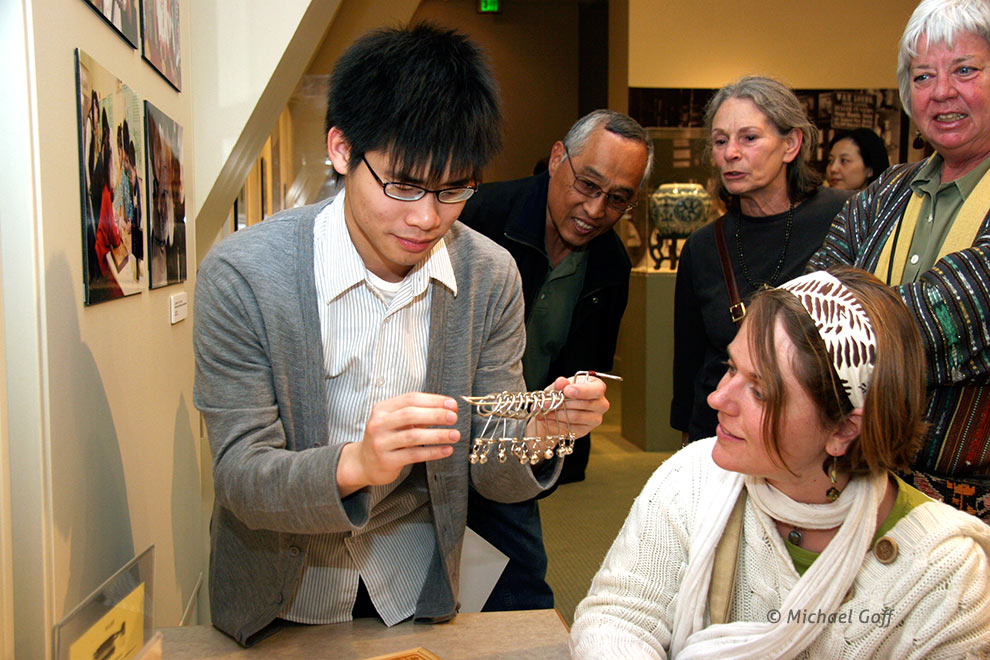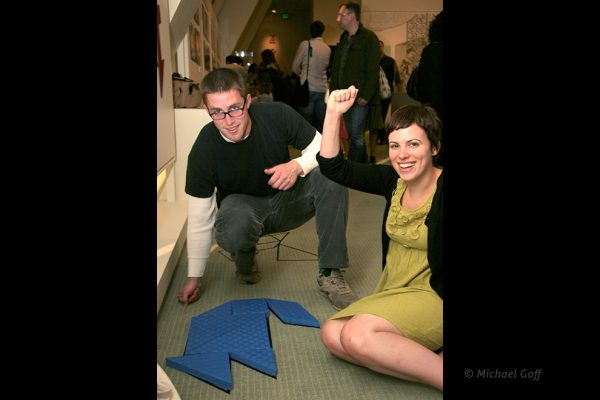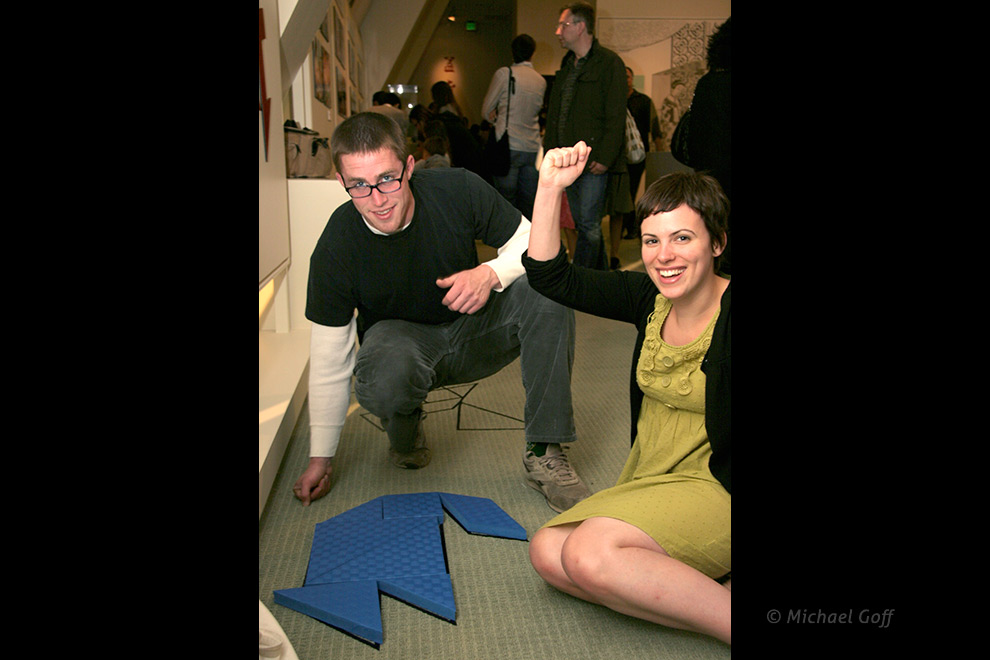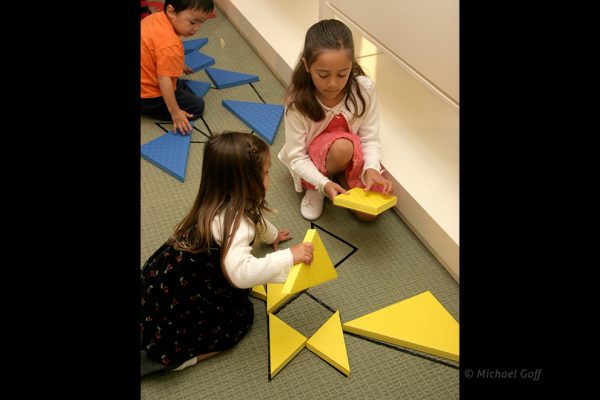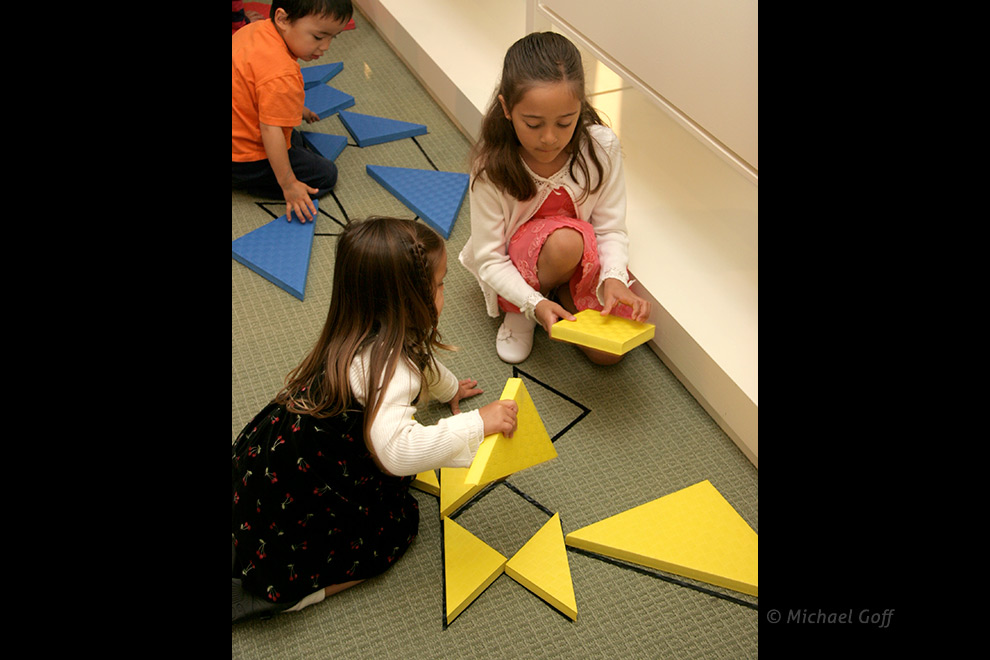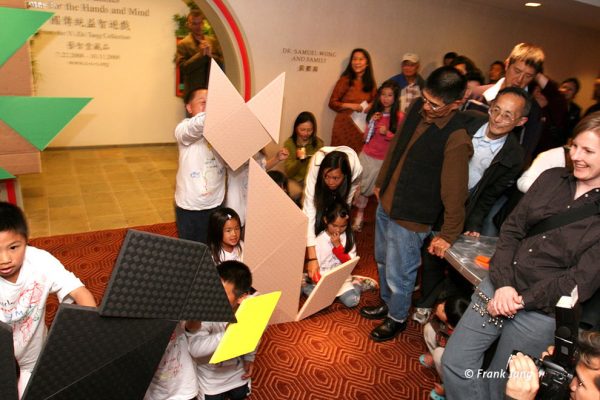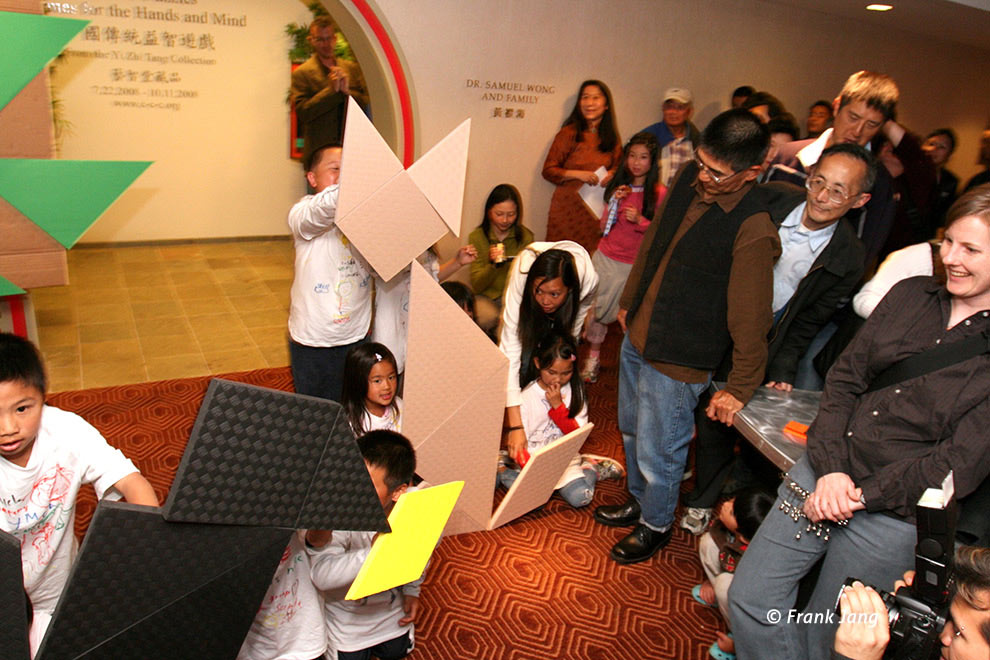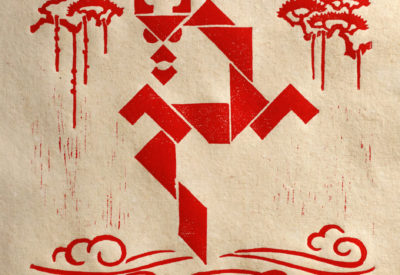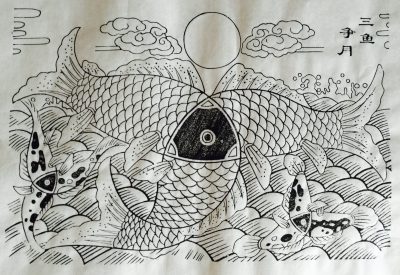Chinese Puzzles: Games for the Hands and Mind
MUSEUM OF CHINESE IN AMERICA, NEW YORK, NY
NOVEMBER 2010 – SEPTEMBER 2011
New York City’s first exhibition of antique Chinese puzzles was on display for ten months at the Museum of Chinese in America (MOCA) in the heart of New York’s historic Chinatown.
Chinese Puzzles: Games for the Hands and Mind featured traditional Chinese puzzles, including tangram, the fifteen-piece puzzle, nine linked rings puzzles, ingenious rings puzzles, sliding block puzzles, and burr puzzles. A selection of antique Chinese puzzle vessels was also on display.
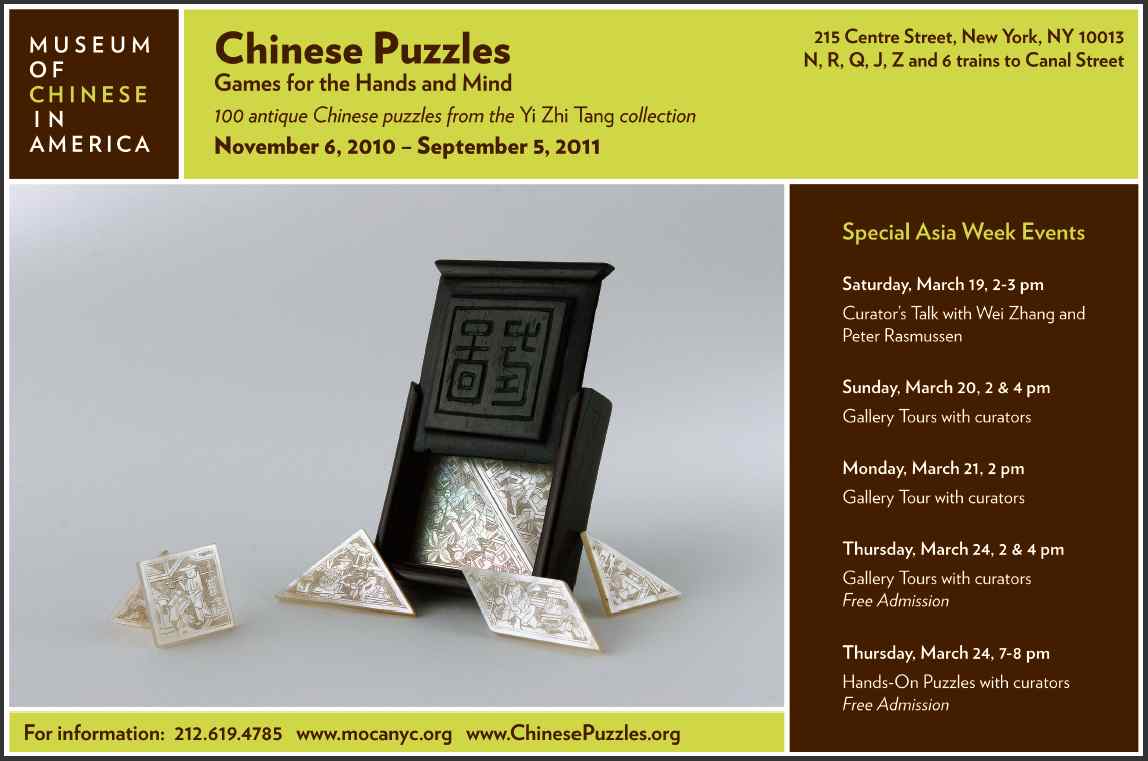
In addition to viewing 100 antique puzzles and puzzle books, visitors also had an opportunity to play with and solve modern versions of the puzzles.
“Puzzles have been one of China’s chief cultural exports to the United States since at least the 19th century,” said MOCA’s director Alice Mong. “Part of our mission is to explore how Chinese culture is lived, experienced, and passed along through generations here in the United States—and with Chinese Puzzles, that exploration can be literally played out with the hands.”
Curated by puzzle collectors Wei Zhang and Peter Rasmussen, and drawn from their Yizhitang Collection of more than 1500 puzzles, books, and graphic materials, the exhibition explored multiple types of puzzles, including tangram, the game that sparked the world’s first international puzzle craze; the nine linked rings (or Chinese rings), an object of interest for mathematicians and computer scientists; and the Chinese sliding block puzzle, a challenge in military strategy. Afforded the same attention as works of fine art and master artisanry, the puzzles on display were made from materials such as porcelain, carved ivory, and mother-of-pearl. Modern replicas suitable for handling allowed exhibition visitors to discover how these mechanical puzzles work.
“Puzzles like these are called ‘intelligence games’ in Chinese, and they are valued as tools for training the mind in creative, logical, and spatial thinking,” explained Wei Zhang. Peter Rasmussen added, “They are also a source of great entertainment. Children enjoy these games just as much as engineers, logicians, and expert puzzlers.
Exhibition Reviews:
The Tribeca Trib – March 4, 2011
Wired Magzine – January 10, 2011
Intersections: Puzzles as Art
SONOMA VALLEY MUSEUM OF ART
JUNE – AUGUST 2009
This exhibition explored the intersection of Puzzles and Art. Both puzzles and art preceded written history and took their places as creative human endeavors. Art tends to reflect the emotional creativity of an artist attempting to convey a feeling, moment, place or idea to the observer. Puzzles tend to engage the holder of the puzzle intellectually—an artificial problem to be solved. The questions, “Can puzzles be artistic?” and “Can art also be puzzles demanding a solution?” were explored by this exhibit.
Chinese Puzzles: Games for the Hands and Mind

CHINESE CULTURE CENTER OF SAN FRANCISCO
JULY – OCTOBER 2008
While the entire world was celebrating the spirit of physical competition at the Beijing Olympics, the Chinese Culture Center (CCC) hosted Chinese Puzzles: Games for the Hands and Mind—the world’s first exhibition devoted to the art of Chinese puzzles. The antique puzzles on display from the Yizhitang collection included tangrams, the fifteen-piece puzzle, nine linked rings puzzles, ingenious rings puzzles, sliding block puzzles, and burr puzzles. In addition, there were displays of Chinese puzzle locks, silver puzzle rings, ceramic puzzle vessels, and puzzling images.
Visitors to the exhibition enjoyed playing with modern versions of the puzzles arranged on tables within the gallery. These puzzles appealed to visitors of all ages, from elderly men and women who had solved them as youngsters in China to toddlers who played with large foam tangrams on the carpeted floor. Groups of youngsters from San Francisco’s summer day camps were treated to special guided tours of the exhibition and “Hands-on-Puzzles” sessions in one of CCC’s classrooms.
Exhibition Reviews:
San Francisco Chronicle, July 15, 2008
Oakland Tribune, September 11, 2008
Arts of Asia, November 2008
Ingenious Wire Puzzles Demonstration
ASIAN ART MUSEUM OF SAN FRANCISCO
AUGUST 2000
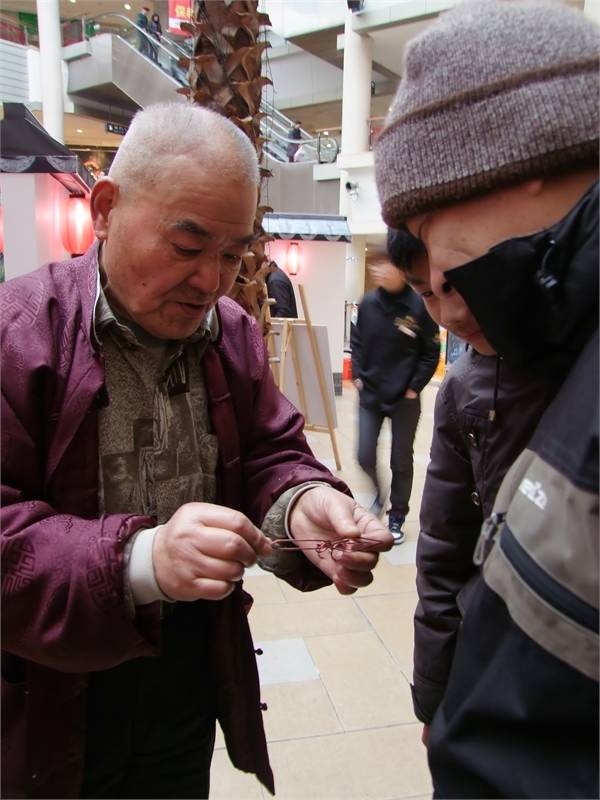
Ruan Genquan, visiting from China, demonstrated the traditional craft of Chinese ring puzzles made from wire. Visitors had the opportunity to solve some of Mr. Ruan’s puzzles as well as to make their own puzzles. Mr. Ruan learned the traditional techniques from his father, Ruan Liuqi, a noted puzzle maker in Suzhou from the 1930s through the 1950s. The elder Ruan made not only the traditional nine linked rings puzzle but also ingenious ring puzzles in the forms of everyday objects. The younger Mr. Ruan took up his father’s craft after retiring from his factory job. Since then he has not only fabricated puzzles for sale but also participated in international puzzle gatherings in Japan and the United States.
Visitors to the museum had the opportunity to learn how Ingenious Rings puzzles are created, and with the assistance of puzzle experts Wei Zhang of Berkeley and Zhou Weizhong of Beijing, they also learned how to solve them. Several collections of puzzles from the Yizhitang collection were on display, including a nine linked rings puzzle previously owned by the family of Pu Yi, the last emperor of China.
Exhibition Review:
Asian Week – September 1, 2000

